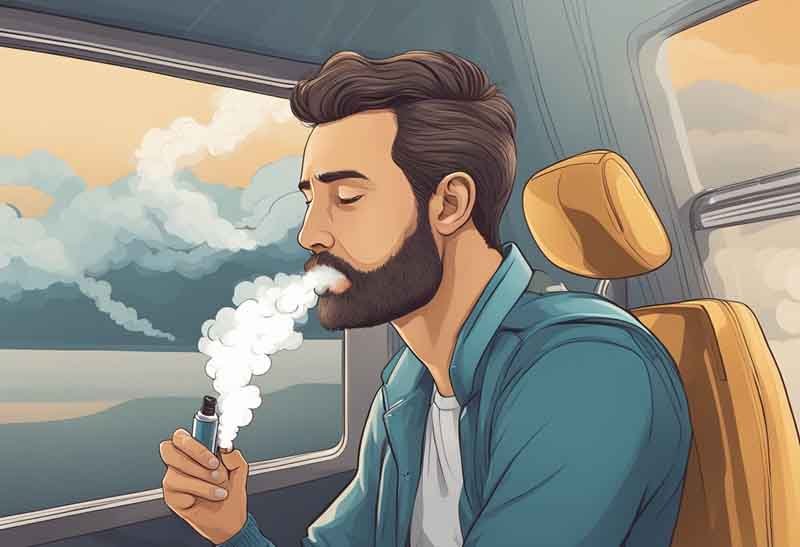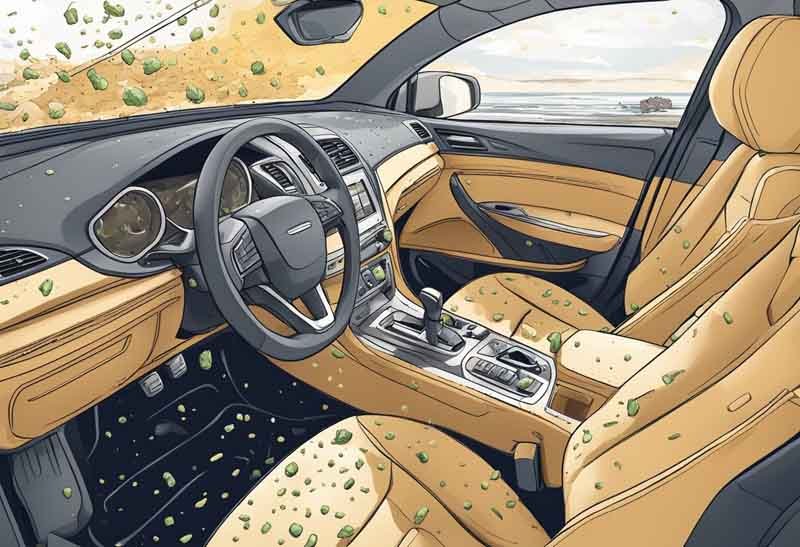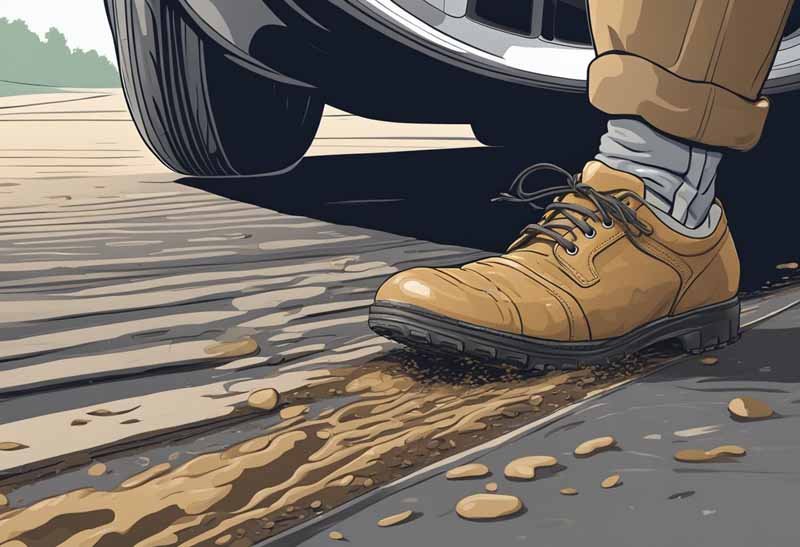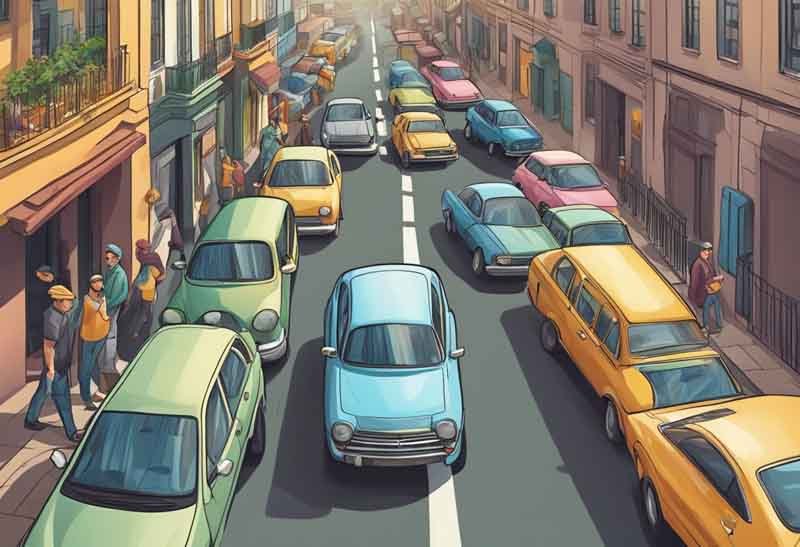Driving for Uber offers a unique window into the human condition, as drivers navigate city streets and suburban sprawls with a revolving door of passengers in their backseat. They are privy to the various behaviours and habits that can turn an ordinary journey into an extraordinary challenge. While many riders are courteous, there is a subset of actions that irk drivers to no end, ranging from inconsiderate antics to outright disregard for their vehicle and profession.
These irritations can pile up over time, altering the driver’s experience and shaping their opinion of the gig economy. From backseat DJs who feel entitled to control the car’s soundtrack to passengers who leave the upholstery in less-than-stellar condition, these minor misdemeanours can escalate the stress levels for drivers on the clock. Safety concerns also arise with behaviours like requesting stops in precarious locations or making last-minute changes in destination that complicate the trip and often, the driver’s schedule.
Key Takeaways
- Uber drivers face a variety of passenger behaviours that can range from mildly annoying to seriously problematic.
- Issues arise with respect to car cleanliness, rider safety, and respect for the driver’s time and vehicle.
- Managing these situations requires drivers to maintain professionalism despite the challenges presented by the passengers.
1. Munching Mayhem: Food and Drink Fiascos in an Uber
Uber drivers frequently face challenges with passengers who bring food and drinks into the vehicle. Below are key irritations noted from their experiences:
- Spills and Stains: Passengers often underestimate the risk of their drinks spilling or food leaving grease marks. A bottle of water might seem harmless until it overturns on a sharp turn, leaving a damp mess.
- Aromas and Odours: The lingering smell of a takeaway can be overwhelming. Drivers report that intense odours are not only hard to eliminate, but they can also affect subsequent passengers and lead to negative reviews.
- Disregard for Rules: Despite many drivers having clear rules against consuming food and beverages, some riders ignore these stipulations, showing a lack of respect for the driver’s workspace.
Indeed, drivers on Reddit attest to the troubles with drinks, particularly those without lids. They share that while some customers are considerate and keep their food contained and off the seats, others are less so.
The issue of food and beverages is not addressed thoroughly in Uber’s official policy, which puts drivers in a difficult position when trying to enforce their own rules. Although Uber holds riders responsible for any mess and applies a cleaning fee, they must balance hospitality with the maintenance and cleanliness of their vehicle.
In addition to the actual mess, dealing with such situations can be time-consuming for drivers, who must clean up after careless passengers, potentially taking time away from earning fares.
2. DJ Nightmares: Loud Music and Stereo Tampering

For many Uber drivers, the in-car entertainment system is an extension of their workspace. However, passengers who fancy themselves as DJs, insisting on playing loud music, can transform an ordinary ride into an auditory ordeal. These self-appointed DJs tamper with the stereo, disregarding the driver’s preferences and the vehicle’s sound system limitations.
Common Complaints Include:
- Insistent passenger music requests
- Volume: Dial cranked to the maximum.
- Control: Passengers taking over the sound system without consent.
Passenger Behaviour Impact:
- Discomfort: High decibel levels causing driver discomfort.
- Safety: Loud music potentially distracting the driver, posing a safety risk.
Drivers report that the imposition of passengers’ musical taste infringes upon their personal space and work environment. There is an implicit expectation for drivers to accommodate passengers’ choices, but when those choices encompass excessive volume or unwanted genre shifts, stress levels rise for the drivers.
Uber drivers’ experiences with stereo tampering vary, but the consensus is clear: passengers who excessively meddle with the music settings can significantly diminish the quality of the driving experience. It is not just about musical preference; it’s about maintaining a modicum of respect for the driver and their workspace.
3. Destination Dilemmas: The Headache of Last-Minute Destination Changes
One major source of frustration for Uber drivers is the last-minute change of destination by passengers. The instant alteration not only disrupts the driver’s planned route but could also affect their earnings and schedule.
- Impact on Earnings: When passengers change their destination without notice, it can lead to longer trips which they may not have time for, affecting subsequent bookings.
- Route Planning: Drivers usually plan their routes in advance, taking traffic and time into consideration. Last-minute changes disrupt this planning.
- Rating Concerns: Drivers may worry about ratings being adversely affected if they refuse the passenger’s request for a change.
Additionally, the navigation system may need a moment to recalibrate, potentially causing confusion and delays. This is particularly challenging in areas with heavy traffic or complex road systems.
Passengers should be encouraged to double-check their destination before hailing the ride to prevent these dilemmas. Uber’s guidelines advise against changing destinations mid-trip without updating the trip details in the app.
Best Practices for Drivers:
- Politely ask passengers to make changes via the app.
- Explain any implications, such as increased fares or time.
Ultimately, clear communication between passengers and drivers is key to avoiding the headaches associated with last-minute destination changes.
4. Clouds of Confusion: Vaping and Inhaling Helium Balloons on Uber Rides

Uber drivers have extensive experience with a multitude of passenger behaviours, some of which can cause significant frustration. Two such activities that can turn a straightforward journey into a complicated affair are passengers vaping and inhaling helium in the confined space of a car.
Vaping:
While some might argue that vaping is a less harmful alternative to smoking, evidence suggests that it still poses risks. Vaping in a closed environment like a car can result in a dense fog that obscures a driver’s vision and potentially compromises safety. Moreover, the scent and chemical composition can linger, affecting subsequent passengers and causing additional work for drivers in terms of airing out and cleaning the vehicle.
- Visibility: Thick vape clouds can reduce in-car visibility.
- Residue: Sticky residue can adhere to surfaces and be troublesome to remove.
- Odour: The aroma, though not as potent as cigarette smoke, can be persistent.
Inhaling Helium Balloons:
Another activity, seemingly harmless and often done for the voice-altering effect, is inhaling helium from balloons. However, this can be dangerous. Helium can displace oxygen and lead to dizziness, loss of consciousness, or worse. Additionally, drivers must manage the distraction and potential medical emergency, all while ensuring the safety of those on board.
- Safety Risks: Oxygen displacement can cause health issues.
- Distraction: Unusual behaviour can distract the driver.
- Noise: High-pitched voices may be startling or irritating.
In essence, drivers wish for a safe and straightforward ride. It is advised that passengers refrain from these behaviours to maintain clarity and safety within the vehicle.
5. Window Woes: Annoying Passersby and Compromising Safety
Uber drivers frequently encounter challenges related to car windows, which can range from minor annoyances to serious safety concerns. A common issue is when passengers insist on lowering windows to interact with passersby. This can distract the driver and may lead to uncomfortable exchanges or even safety risks.
- Distraction: Passengers who engage with people outside the vehicle can distract the driver and disrupt concentration, making it harder to navigate busy streets safely.
- Noise Pollution: Shouting or loud conversations with people outside can create a chaotic environment inside the car, which is distressing not only for the driver but also for other passengers who expect a peaceful journey.
- Temperature Control: Requests to roll down windows can compromise the comfort of the cabin, especially when the weather outside is particularly cold or hot, making it difficult to maintain a consistent and comfortable temperature inside.
- Safety Hazard: Interactions with passersby through the window can escalate into disputes or put the driver and passengers at risk if the person outside is aggressive or confrontational.
| Issue | Impact on Driver | Impact on Safety |
|---|---|---|
| Distraction | Decreased concentration | Increased accident risk |
| Noise Pollution | Increased stress and discomfort | Reduced awareness of surroundings |
| Temperature | Harder to manage cabin environment | Passenger discomfort |
| Safety Hazard | Potential for aggression | Direct risk to passengers and driver |
Drivers must set clear boundaries regarding window usage and are encouraged to communicate effectively with passengers to minimise these issues and ensure a safe, pleasant trip for everyone involved.
6. The Sleeping Passenger: When End-Of-Ride Awakenings Become Difficult

For many Uber drivers, the sight of a passenger dozing off in the backseat is all too common. It seems harmless enough, but issues arise when the journey ends and it’s time to rouse the sleeper. They may not wake easily, causing delays for the driver and sometimes requiring more than a gentle nudge.
The Main Challenges:
- Awkward Rousing: A gentle approach may be insufficient, leaving drivers to escalate their efforts, risking discomfort or embarrassment for both parties.
- Time Delays: Each minute trying to wake a passenger eats into a driver’s schedule, potentially affecting subsequent pickups.
- Safety Concerns: Ensuring a passenger can safely exit the vehicle is paramount, particularly at night or in remote locations.
Strategies for Drivers:
| Approach | Details |
|---|---|
| Softly Speaking | Starting with a calm voice can gently bring a passenger out of sleep. |
| Incremental Volume | Gradually increasing volume if there’s no response. |
| In-Car Features | Using the vehicle’s features, like lights or gentle music, to aid awakening. |
Remember, the approach should always respect the passenger’s dignity while ensuring they depart the vehicle safely and promptly. Drivers find this aspect of their job requires patience and tact, and it’s essential they develop effective, yet considerate, methods for dealing with the sleeping passenger scenario.
7. Luggage Logistics: Navigating Oversized Items and Chaotic Exits

When passengers bring oversized or excessive luggage, it can create a stressful experience for both the rider and the Uber driver. Properly handling luggage requires clear communication and understanding of what is acceptable within an Uber vehicle.
Oversized Luggage:
Drivers often face the challenge of accommodating luggage that exceeds the capacity of their vehicle. Here are the general guidelines for luggage in an Uber:
- UberX and Uber Exec: Typically fit up to four passengers with a reasonable amount of luggage.
- Uber XL: Allow for larger groups and more bags.
Passengers should be aware that bringing more luggage than the car can handle may require an upgrade to a larger vehicle, which can lead to unexpected costs. Hence, it is advisable to inform the driver in advance if you are carrying a significant amount of luggage.
Chaotic Exits:
A hasty departure from the Uber vehicle with bags in tow can lead to personal items being left behind or even cause damage to the vehicle’s interior. For a smooth exit:
- Ensure all belongings are packed before the driver arrives.
- Double-check the vehicle for personal items before leaving.
- Exit the vehicle calmly, even if in a rush.
Respect for Space:
Both parties must recognize the limitations of the vehicle’s boot space. If a passenger has excess or oversized luggage, contacting the driver beforehand can save time and prevent frustration at the pickup point.
The bottom line is that passengers should plan accordingly for their luggage needs, and drivers should communicate any limitations of their vehicle before accepting a trip. This mutual understanding can ensure a smooth ride for everyone involved.
8. Vomit Vexation: The Unpleasant Aftermath of In-Car Sickness

When passengers succumb to motion sickness, Uber drivers are often left with the task of cleaning the remnants. Motion sickness is caused by a disparity between the visual motion cues and the vestibular system’s sense of movement. The inner ear sends different signals to your brain from what your eyes are seeing, which can result in a passenger feeling unwell.
For drivers, the primary concern post-incident is sanitisation. The cleaning process can be time-consuming and unpleasant, requiring them to take time off the road, which is necessary to maintain hygiene standards and passenger comfort in subsequent trips. A vehicle affected by vomit also poses a risk of odour retention, potentially impacting future passenger experiences and ratings.
Furthermore, such incidents can often necessitate professional cleaning services. Due to the acidic nature of vomit, upholstery and carpets are at risk of permanent damage if not promptly and thoroughly cleaned, possibly leading to costly repairs or replacements.
Key Considerations for Drivers:
- Immediate action: Containing the area quickly can prevent the spread and seepage into hard-to-clean spaces.
- Cleaning supplies: Carrying a kit with gloves, disinfectant, and absorbent materials is essential.
- Professional cleaning: Sometimes, the extent of soiling requires professional attention.
- Cost: The financial burden of cleaning or damages might not always be covered by passengers or Uber’s policy, making this a notable irritant for drivers.
9. Muddy Matters: Dirty Shoes and Interior Cleanliness

When passengers enter an Uber with muddy shoes, they may not realise the frustration and inconvenience they cause. For drivers, the cleanliness of their car is not just about pride; it’s a key part of the service they provide.
Prevention
- Mats: Drivers often use rubber mats during wet conditions, which are easier to clean.
- Notices: Polite signs can prompt passengers to wipe their feet.
Cleaning Challenges
- Seats and Carpets: Mud can easily transfer to fabric, requiring professional cleaning.
- Time: Cleaning can lead to downtime, impacting the driver’s earnings.
Solutions
- Immediate Action: Drivers may carry brushes to remove excess dirt after a trip.
- Protective Measures: Seat covers and footwell linings offer a protective layer.
Drivers understand that accidents happen, but they appreciate it when passengers take a moment to clean their shoes. A small consideration goes a long way in maintaining the car’s interior and the driver’s peace of mind.
10. Pickup Predicaments: Difficult-To-Stop Locations and Parking Woes

Uber drivers often encounter scenarios that test their patience, but few can be as vexing as pickup predicaments due to difficult stopping locations and parking issues.
The challenges begin when passengers request pickups from areas where stopping is not just inconvenient, but sometimes borderline illegal. For instance, bus stops are typically off-limits for other vehicles, yet passengers might not consider this when hailing a ride.
High-traffic areas, such as bustling city centres or outside popular venues, present their own set of problems. Drivers must navigate through a sea of pedestrians and vehicles, desperately searching for a safe place to pull over.
Below is a list of common hotspots for pickup troubles:
- High-traffic junctions create huge complications in stopping and making pick-ups. Sometimes it is difficult to tell which side of the junction the passenger is waiting at.
- Roads with single lanes, especially during high traffic times. Stopping at these times is near enough impossible.
- Taxi ranks and bus stops are completely off-limits in London.
- Pavements
These difficulties are exacerbated at night when visibility is low and during peak hours when the roads are congested. Drivers might also encounter passengers who expect a door-to-door service, regardless of parking constraints, adding to the frustration.
Drivers must continuously adapt, using their knowledge and experience to find safe, legal spots for pickups. It requires a mix of patience, sharp judgement, and an unwavering commitment to safety.